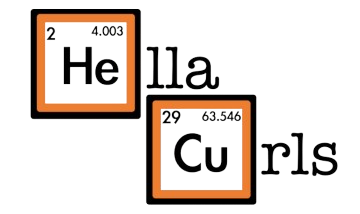Ever wonder why your hair feels dry and brittle one day, but overly soft and limp the next? You’re not alone! Maintaining the perfect balance between protein and moisture is crucial for healthy hair growth. In fact, too much of one and not enough of the other can cause your hair to break, frizz, or just stop growing altogether. Understanding how to manage this balance is key to unlocking your healthiest hair yet.
The Role of Protein and Moisture
Hair is made up of around 90% protein, specifically keratin, which gives it structure, strength, and elasticity. Protein treatments help repair damage from heat, chemical processing, and environmental stress by rebuilding the hair shaft. But here’s the thing: protein is strong, but it’s not flexible. That’s where moisture comes in.
Moisture, primarily from water and hydrating ingredients like glycerin or aloe vera, keeps hair soft, pliable, and less prone to breakage. Too much protein and your hair can become stiff and snap under tension. Too much moisture, and your hair will lack structure, feeling mushy or limp.
The trick is striking the perfect balance!
How to Tell If Your Hair Needs Protein
Does your hair feel stretchy, gummy, or overly soft when wet? If so, it may be lacking protein. Protein deficiency often leads to weak, limp strands that break easily. This can happen if your hair has been chemically treated or if you over-moisturise without replenishing its protein needs.
Signs your hair needs protein:
- Hair stretches but doesn’t return to its original shape.
- Increased breakage or split ends.
- Limp, lifeless strands with no bounce or definition.
Solution: Incorporate a protein treatment into your routine. Look for treatments with keratin, wheat protein, or hydrolysed silk. Use these sparingly—once a month is typically enough for most hair types.
How to Tell If Your Hair Needs Moisture
On the flip side, if your hair feels rough, dry, or straw-like, it’s time to focus on moisture. Heat styling, sun exposure, and even indoor heating can suck moisture out of your hair, leaving it brittle and prone to breakage.
Signs your hair needs moisture:
- Dry, rough, or frizzy texture.
- Hair feels crunchy or stiff after styling.
- Dull appearance with a lack of shine.
Solution: Moisture-rich conditioners and deep treatments are your best friends. Ingredients like mango butter, aloe vera, and avocado oil can deeply hydrate and replenish your strands. Incorporate a moisture mask once a week to keep your hair soft and manageable.
Achieving the Perfect Balance
So, how do you keep protein and moisture in check? It’s all about listening to your hair and adjusting your routine accordingly.
1. Alternate Between Protein and Moisture Treatments
For most people, alternating between a protein treatment and a moisture mask works well. If you have chemically processed or high-porosity hair, you may need protein more often, while those with lower-porosity hair might need more frequent moisture.
2. Use Multi-Tasking Products
Look for products that offer a balance of both protein and moisture. These will help maintain a steady equilibrium without overloading your hair with one or the other. Conditioners with both hydrolysed protein and humectants like honey or glycerin are great options.
3. Clarify When Necessary
Sometimes, product build-up can prevent your hair from absorbing the protein and moisture it needs. Use a clarifying shampoo once a month to remove build-up and help your hair receive treatments more effectively.
4. Deep Condition Regularly
Regardless of your hair type, a weekly deep conditioning treatment can work wonders for keeping your hair balanced. Look for treatments that offer hydration and contain mild protein to keep your strands healthy and strong.
Pro Tip: Conduct a "Hair Elasticity Test"
Want to test your hair's balance? Take a single strand of wet hair and gently stretch it. If it stretches slightly and returns to its original shape, you’ve got a good balance. If it stretches and doesn’t return (or breaks), you need more protein. If it doesn’t stretch much at all, it’s time to add more moisture.
Final Thoughts
Balancing protein and moisture is one of the most important aspects of hair care, especially for those with curly or textured hair. It’s not about choosing one over the other—it’s about knowing when your hair needs strength and when it needs hydration. By carefully monitoring your hair's needs and using the right treatments, you’ll be well on your way to stronger, healthier, and more resilient hair.
Ready to take your hair care routine to the next level? Start with a moisture boost or a protein fix, depending on what your hair is craving, and watch the difference!


